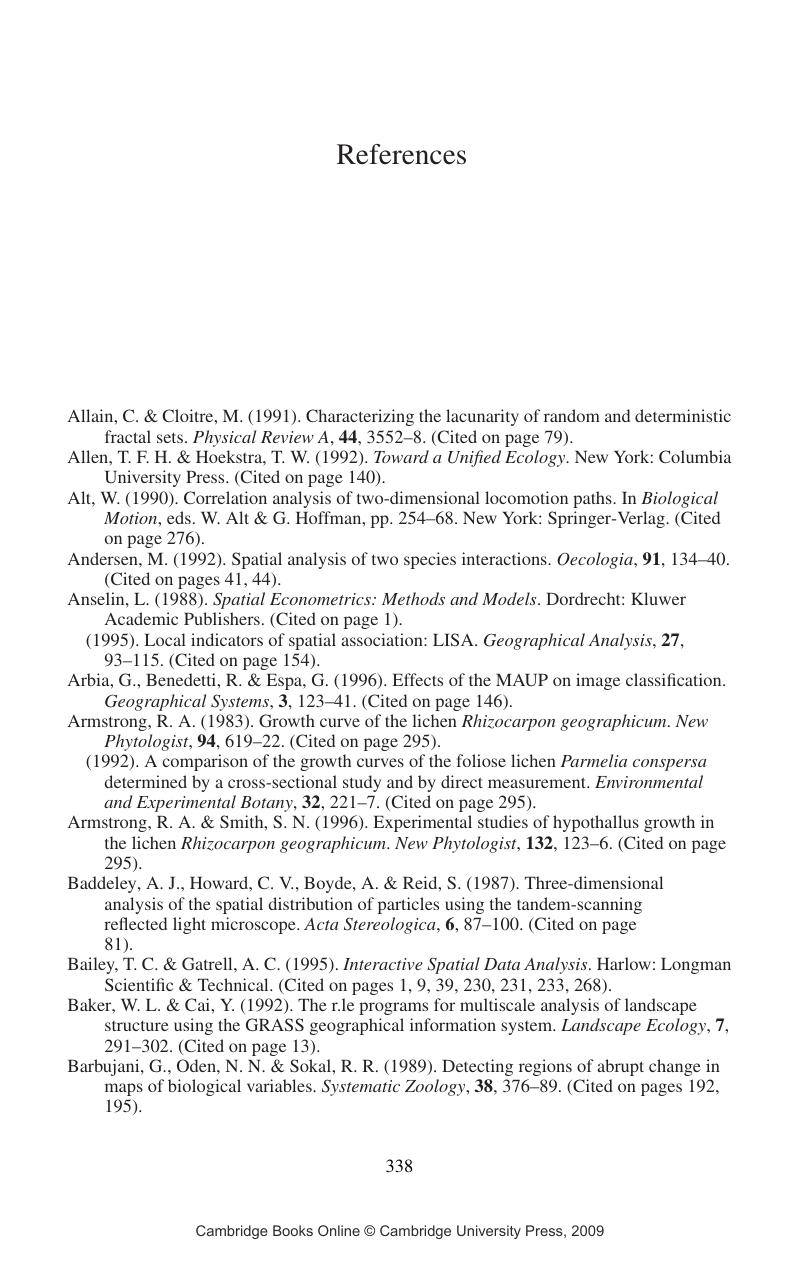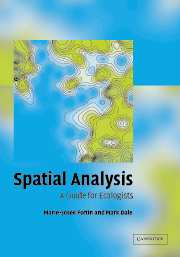Book contents
- Frontmatter
- Contents
- Preface
- 1 Introduction
- 2 Spatial analysis of population data
- 3 Spatial analysis of sample data
- 4 Spatial partitioning of regions: patch and boundary
- 5 Dealing with spatial autocorrelation
- 6 Spatio-temporal analysis
- 7 Closing comments and future directions
- Appendices
- References
- Index
- References
References
Published online by Cambridge University Press: 29 July 2009
- Frontmatter
- Contents
- Preface
- 1 Introduction
- 2 Spatial analysis of population data
- 3 Spatial analysis of sample data
- 4 Spatial partitioning of regions: patch and boundary
- 5 Dealing with spatial autocorrelation
- 6 Spatio-temporal analysis
- 7 Closing comments and future directions
- Appendices
- References
- Index
- References
Summary

- Type
- Chapter
- Information
- Spatial AnalysisA Guide for Ecologists, pp. 338 - 357Publisher: Cambridge University PressPrint publication year: 2005



